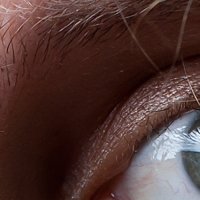privatebydesign said:The truth is, two photographers standing next to each other, one crop sensor, the other ff sensor, with exactly the same camera settings and the same framed image (meaning the crop owner has a wider lens), if they both take an image then the crop sensor image has more dof.
We are going in circles. Read my first post in this thread. "Same settings" does not make much sense. Do you consider 50/2 and 80/2 to be "the same settings"? Yes or No? What about 50/2 and 80/3.2? Are they "the same"? How do you exactly choose "the same settings" if the FL's must be different? You are confused by "f/2" without understanding that this is just a ratio. The meaningful thing to do is to shot not with the "same settings" but with the settings which would give you the same picture in terms of AOV, DOF, shutter speed and shot noise. Those are the equivalents settings. So in your scenario, the crop camera owner would choose, say, 50/2 to match 80/3.2, if that is possible. The problem is, sometimes it is not.
Or, consider the corollary of your statement "But the fact remains: smaller formats do not allow you to get deeper DOF.", that would be, larger formats do not allow you to shoot narrower dof.
Oh, no, this is not a corollary of my statement.
Upvote
0

